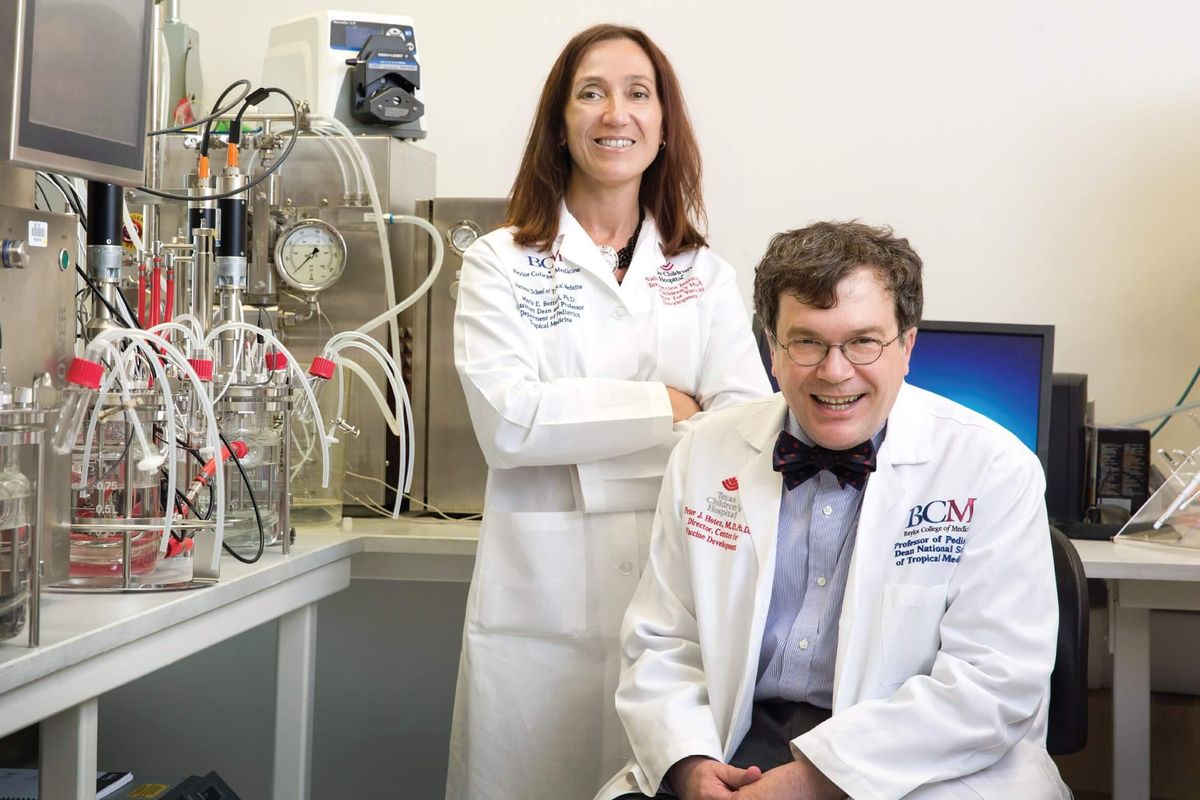University of Houston engineers recognized, TMCx company raises funds, and more local innovation news
short stories
It's been a horrific week for both the city of Houston and the state of Texas. Millions of residents have lost power and/or water due to a winter storm that brought low temps. For this reason, Houston innovation news may have fallen through some of the cracks.
In this roundup of short stories within Houston innovation, the Texas Medical Center's Venture Fund and Chevron Technology Ventures make new investments, University of Houston professors make big moves, both Rice University and UH announce new programs, and more.
TMCx company raises $2 million
The Texas Medical Center Venture Fund announced its latest investment. Noninvasix Inc., a startup working on novel precision oximetry technology announced it has closed an over-subscribed seed round at $2 million led by the TMC Venture Fund with support from Philips and GPG Ventures. The funds will help the company advance product development and attain FDA clearance.
"TMC Venture Fund has been a strong supporter of Noninvasix since our initial investment in the company, and we look forward to our continued partnership with them," says Tom Luby, director of TMC Innovation, in a news release. "The potential of this platform technology to guide better clinical decision-making and improve outcomes has us excited to be part of the effort that brings the optoacoustic technology to the market."
The Noninvasix team has created a solution for the safe, accurate and non-invasive monitoring of infant welfare in the neonatal intensive care unit.
"Brain hypoxia, characterized by restricted blood flow to the brain, accounts for 23 percent of all neonatal deaths worldwide and costs the U.S. healthcare system over $7 billion per year, making the development of an accurate and precise patient monitoring system a top maternal-fetal health priority," says Noninvasix CEO Graham Randall, in the release.
"Noninvasix's novel solution utilizes optoacoustic monitoring of cerebral venous oxygenation to accurately measure the adequacy of the oxygen supply to a baby's brain in real time."
The Cannon and the University of Houston launch new partnership

A UH program has teamed up with a local startup development organization. Photo courtesy of The Cannon
The Cannon has partnered up with the Wolff Center for Entrepreneurship at the University of Houston to launch a semester-long program that will introduce students to the Startup Development Organization Network.Through the new collaboration, students will have access to new opportunities to interact and connect with professionals and advisers.
"We couldn't be prouder to partner with the University of Houston and the Wolff Center for Entrepreneurship to engage with the students that will soon be driving innovation in Houston and beyond," says Jon Lambert, CEO of The Cannon, in a news release. "UH is widely recognized for its excellence in entrepreneurial education and what Dave Cook and his team have built through The Wolff Center is second to none.
"The Cannon is excited for the opportunity to play a role in enhancing the entrepreneurial education journey through helping to provide a bridge between world-class academic programming and the commercial entrepreneurial landscape."
Students at WCE will receive access to The Cannon's online platform, Cannon Connect, as well as access to exclusive events hosted by The Cannon.
Rice University launches new data science program

Rice University is now offering a master's in data science beginning in the fall. Photo courtesy of Rice
Rice University has announced it's creating a Master of Data Science program. The degree is offered through the George R. Brown School of Engineering and managed by the Department of Computer Science. With classes beginning in the fall, applications are now open.
"The field of data science touches almost every industry in our economy," says Scott Rixner, a professor in the Rice's Department of Computer Science, in a press release. "This degree will provide those seeking to find new careers, or to advance in their current careers, the opportunity to acquire an indispensable skill set and to build future-focused critical expertise that will drive future innovation."
The 31-credit program will be offer classes both online and face-to-face, according to the release. The courses will deliver the skills needed to collect, evaluate, interpret and present data for effective decision-making across a variety of industries. The new program joins the online Master of Computer Science degree that was launched in 2019.
"Data science has revolutionized all fields of study and many sectors of the industry where data is central to the scientific or industrial endeavor," says Rice Dean of Engineering Luay Nakhleh, in the release. "Data-driven discovery has complemented hypothesis-driven discovery, and it is here to stay. This degree positions our students for rewarding, life-long careers that provide meaningful impact in design and research in a multitude of industries."
Houston biotech company with COVID-19 treatment enters agreement with UH

A UH-founded biotech company has a new partnership to announce. Image via Getty Images
AuraVax Therapeutics Inc. has entered into an exclusive license agreement with the University of Houston for its intranasal vaccine and therapeutics technology platform. The biotech company is developing novel intranasal vaccines and therapies to help patients defeat debilitating diseases including COVID-19. This new agreement upgrades the optioned intellectual property between UH and AuraVax announced in October.
The vaccine is a nasal inhalant, similar to FluMist, and was developed by Navin Varadarajan, an M.D. Anderson professor of chemical and biomolecular engineering at UH. Varadarajan is a co-founder of AuraVax.
"We are excited to rapidly expand our relationship with the University of Houston to advance the development of this novel intranasal approach to tackle respiratory viruses. We plan to stop COVID-19 at its point of entry — the nasal cavity — and we believe our intranasal platform represents a differentiated solution that will lead to a vaccine to create sustained immunity to COVID-19 and other viruses," says Varadarajan, in the news release.
Chevron Technology Ventures makes latest investment

CTV has recently invested in a geothermal energy company. Photo via eavor.com
Houston-based Chevron Technology Ventures has announced its latest investment in Eavor Technologies Inc., a Canadian company that closed a $40 million funding round. Eavor is working on a scalable geothermal technology and hopes to power the equivalent of 10 million homes by 2030.
Eavor-Loop™, Eavor's technology, uses the natural heat of the earth like a battery and is different from what's on the market because of its scalable and transportatable application — as well as because it produces zero emissions.
Along with CTV, investors included bp Ventures, Temasek, BDC Capital, Eversource1, and Vickers Venture Partners.
"I am delighted that with the funding closed in this round we can look forward to bringing down the cost of clean, dispatchable power to a universally competitive level – an important milestone for renewable energy," says John Redfern, president and CEO of the company, in a news release. "The involvement of companies such as bp and Chevron represents a fantastic endorsement of our technology, the progress we have made to date and the promise for its global scalability."
3 UH engineers named to Academy of Inventors

Three UH engineers have been named senior members of the National Academy of Inventors. Photos via UH.edu
The National Academy of Inventors have named three University of Houston Cullen College of Engineering researchers senior members for 2021.
Hien Nguyen, assistant professor of electrical and computer engineering; Jeffrey Rimer, Abraham E. Dukler Endowed Chair, William A. Brookshire Department of Chemical and Biomolecular Engineering; and Gangbing Song, Moores Professor of Mechanical Engineering, are among the 61 selected for the distinguishment, according to a press release from UH.
"This national distinction honoring the research and scholarship of Drs. Nguyen, Rimer and Song is emblematic of the reputation for innovation fostered at the Cullen College of Engineering," says Paula Myrick Short, senior vice president for academic affairs and provost at UH, in the release. "I congratulate these three outstanding faculty members for this well-deserved recognition."
Nguyen works with biomedical data analysis and artificial intelligence, Rimer's expertise in the processes behind crystal growth and formation, and Song researches the development of actuator systems for aerospace, biomedical and oil exploration applications.
A full list of NAI Senior Members is available on the NAI website.
Aziz Gilani to be recognized nationally

A Houston investor is being recognized nationally. Photo va mercuryfund.com
Aziz Gilani, managing director at Houston-based Mercury Fund, was just selected for an award from the National Venture Capital Association. Gilani is being recognized with the Outstanding Service Award for his work last year outlining and explaining the Paycheck Protection Program from the Small Business Administration to entrepreneurs.
The award will be presented at NVCA's virtual ceremony on March 9. More info on the award ceremony here.




















